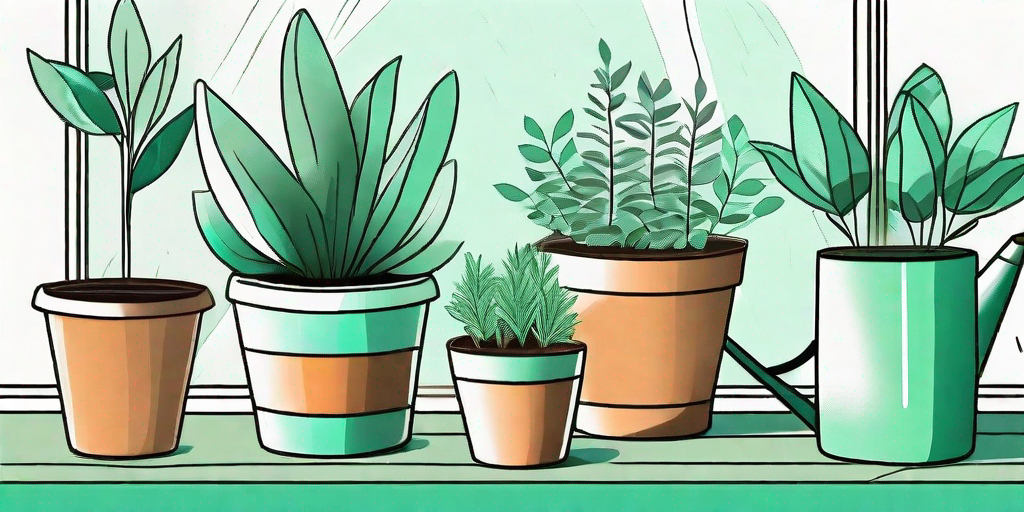
Welcome, budding horticulturists! If you've found yourself here, it's likely because you've recently adopted a new green friend, or perhaps you're considering it. Either way, you're in the right place. This guide will help you navigate the verdant world of plant care and ensure your leafy companions thrive.
Understanding Your Plant's Needs
Just like humans, plants have needs. They're not as vocal about them, but they're there. And no, they don't need Netflix or a comfy couch, but they do require light, water, and nutrients. Let's dive into these necessities.
Light
Plants are the original solar panels, converting sunlight into energy through a process called photosynthesis. But not all plants require the same amount of light. Some, like the sunflower, are sun-worshippers, while others, like the snake plant, are content with less light. It's crucial to understand your plant's light needs to keep it happy and healthy.
Generally, plants are categorized into three groups based on their light requirements: low light, medium light, and high light. Low light plants can survive with minimal sunlight, making them perfect for darker corners of your home. Medium light plants require a few hours of direct or indirect sunlight each day, while high light plants need several hours of direct sunlight.
Water
Water is another essential need for plants. It's like their morning coffee, but without the caffeine. However, overwatering is a common mistake among beginner plant parents. Remember, plants are not fish; they don't like to swim.
Each plant has different watering needs. Some plants, like succulents and cacti, prefer their soil to dry out completely between waterings. Others, like ferns and peace lilies, prefer consistently moist soil. The key is to understand your plant's watering needs and stick to a schedule.
Nutrients
Plants need food too, but don't worry, they're not picky eaters. They get their nutrients from the soil. However, over time, these nutrients can become depleted, especially in potted plants. That's where fertilizers come in.
Fertilizers are like multivitamins for plants, providing them with essential nutrients like nitrogen, phosphorus, and potassium. However, it's important to use them sparingly. Too much fertilizer can harm your plant. It's like feeding them a whole cake when they only wanted a slice.
Choosing the Right Pot
When it comes to pots, size matters. A pot that's too small can cramp your plant's roots, while a pot that's too big can lead to overwatering. The key is to choose a pot that's just right for your plant.
Additionally, the material of the pot can affect your plant's health. Plastic pots retain moisture, making them ideal for plants that like their soil to stay moist. On the other hand, clay or terracotta pots are porous, allowing the soil to dry out faster, which is perfect for plants that prefer drier soil.
Common Plant Problems and How to Solve Them
Even with the best care, plants can encounter problems. But don't panic! Most plant problems can be solved with a little TLC and the right approach.
Yellow Leaves
Yellow leaves can be a sign of overwatering. If your plant's leaves are turning yellow, check the soil. If it's soggy, you might be overdoing it on the H2O. Cut back on watering and make sure your pot has proper drainage.
Brown Tips
If your plant's leaves have brown tips, it could be a sign of underwatering or low humidity. Try increasing your watering frequency or misting your plant to increase humidity.
Slow Growth
If your plant seems to be growing slower than a snail, it might be lacking nutrients. Consider adding a slow-release fertilizer to the soil to give your plant a nutrient boost.
FAQs
- How often should I water my plant?
It depends on the type of plant and its watering needs. Some plants prefer their soil to dry out between waterings, while others prefer consistently moist soil. Always check the soil before watering. - How much light does my plant need?
Again, it depends on the plant. Some plants require several hours of direct sunlight each day, while others can survive with minimal light. Always research your plant's light requirements. - Why are my plant's leaves turning yellow?
Yellow leaves can be a sign of overwatering. Check the soil. If it's soggy, you might be giving your plant too much water. - What kind of pot should I use?
The size and material of the pot can affect your plant's health. Choose a pot that's the right size for your plant and made of a material that suits your plant's watering needs.
Conclusion
Plant care can seem daunting at first, but with a little knowledge and patience, you can become a pro. Remember, every plant parent makes mistakes. It's all part of the learning process. So, roll up your sleeves, get your hands dirty, and start growing!
And remember, the best thing about plants is that they don't talk back. So go ahead, talk to your plants, sing to them, or even read them this guide. They might not understand, but they'll appreciate the company.















